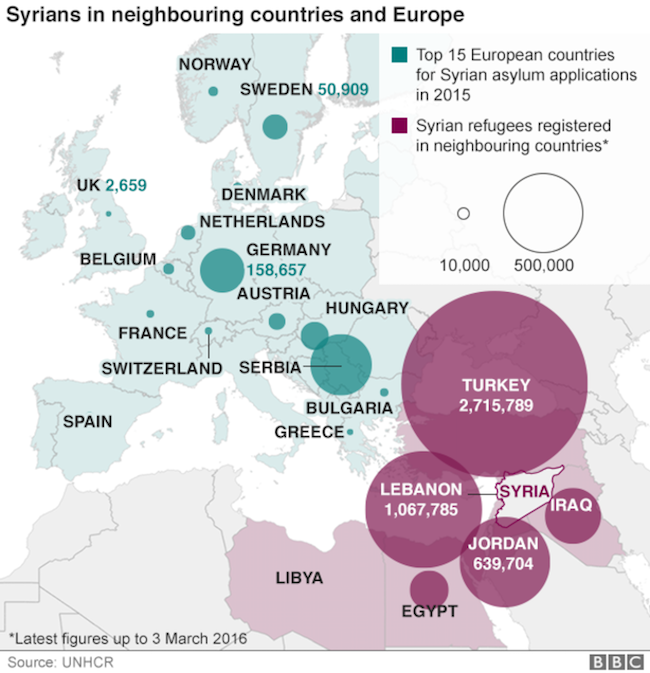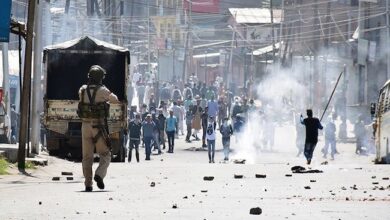The Syrian crisis: a geopolitical analysis of Western intervention in the Middle East
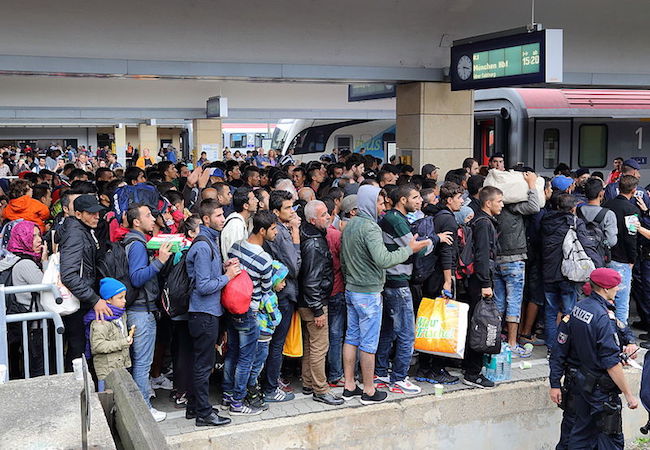
By David McDonald
It seems like yesterday when the Syrian crisis and ISIS threats were all over the news. When in reality, this was several months ago.
It’s been a long time since I’ve seen news about the civil war going on in Syria. I just recently wrote an article about the United Kingdom leaving the European Union, and a main contributor to the public opting out of the multi-nation pact was the influx of Syrian refugees pouring into the country.
I’ve decided to tackle the daunting task of trying to understand what is going on in the Middle East right now, and condense it into a readable article with all the top facts that I think you should know.
More specifically, I’m going to analyse why there is civil unrest in Syria, why there are over 250,000 civilians dead and millions of others displaced and forced to be refugees, as well as why Western superpower USA along with Russia and the UK are invading the country and bombing thousands of innocent civilians (bet you haven’t heard about that on CNN). Furthermore, I’ll detail why this is a geopolitical crisis (politics having to do with geographical factors) and not just a civil war based on radical islamists who want nothing more than land and money.
The issue is very complex, and I won’t be able to offer every perspective in this article, but I will be able to give you a clear, concise guide to what is actually going on in the Middle East, and why there are millions of refugees that are fleeing to bordering countries.
History of Syrian Unrest
The country has been experiencing civil unrest for quite some time now. Since July 17th 2000, Bashar Al Assad, son of brutal dictator Havez Al Assad (ruled Syria from 1971 to 2000) has thrown the nation into a state of turmoil. He is unwilling to relinquish control to democratic pressures. He caused a civil war which shattered his nation. He opened the door to Al-Qaeda radicals to walk through and grow exponentially. He willingly allowed the use of weapons of mass destruction on his own people. The biggest problem of this whole mess? He isn’t even the worst dictator in his country.
Syria is in such a terrible state because there are two main evils fighting against each other: Assad and the rebellion (ISIS and the Kuds). So how did this all start?
Timeline of recent events in Syria (2011-present day)
- March 2011- Security forces shoot dead protesters in southern city of Deraa demanding release of political prisoners, triggering violent unrest that steadily spread nationwide over the following months.
- May 2011 – Army tanks enter Deraa, Banyas, Homs and suburbs of Damascus in an effort to crush anti-regime protests. US and European Union tighten
- June 2011 – 120 members of the security forces have been killed by “armed gangs” in the northwestern town of Jisr al-Shughour. Troops besiege the town and more than 10,000 people flee to Turkey. President Assad pledges to start a “national dialogue” on reform.
- July 2011 – February 2012 – New Syrian National Council says it has forged a common front of internal and exiled opposition activists. Arab League votes to suspend Syria, accusing it of failing to implement an Arab peace plan, and imposes sanctions. December – Twin suicide bombs outside security buildings in Damascus kill 44, the first in a series of large blasts in the the capital that continue into the following summer.
- July 2012 – Free Syria Army blows up three security chiefs in Damascus and seizes Aleppo in the north.
- August 2012 – US President Obama warns that use of chemical weapons would tilt the US towards intervention.
- 2013 – several bombings take place, bordering nations such as Israel were to blame at the time but action was never taken. Also sees the rise of Islamists. Syrian government accused of using chemical weapons to kill civilians in an attempt to distinguish an uprising, these claims were denied.
- 2014 January-February – UN-brokered peace talks in Geneva fail, largely because Syrian authorities refuse to discuss a transitional government.
- 2014 February – August – ISIS declare “caliphate” in several territories. This term means ‘Islamic State’ where a caliph is the political and religious leader and his power and authority is absolute, meaning the Syrian government has no power in the areas controlled by ISIS.
- 2014 September – US and five Arab countries launch airstrikes against ISIS in the areas captured by the terrorist regime.
- 2015 January – June – ISIS and Kurdish forces fight for territory and power.
- 2015 September – Russia carries out its first airstrikes in Syria, saying they target the ISIS group, but others claim these strikes target anti-Assad rebels.
- 2015 December – Britain joins US-led bombing raids against Islamic State in wake of Paris suicide bombing attacks.
- 2016 March – Syrian government forces retake Palmyra from Islamic State, with Russian air assistance.
- 2016 May – Present – US-Russian ceasefire set back in February is extended. Fighting still continues however.
To sum all of this up, everything began when security forces killed peaceful protestors in a southern Syrian city. From there, Assad ordered army tanks to stop anti-regime protesters. The Syrian government then fails to implement a peace plan in the nation and the UN suspends them. From there, numerous terrorist acts take place from suicide bombings to mass killings in an attempt to overthrow the government. The government retaliated in an attempt to restore peace, but the fighting only got out of hand. ISIS began conquering massive amounts of land throughout the country and claimed these areas to be an Islamic State (an area where the government has no control). From there, the US, Russia, UK, China, and Germany alongside several other nations have all intervened to no peaceful conclusion yet. To this day, the fighting still continues, the government still has little control over its country, and thousands of people are fleeing the country on a daily basis. Although you don’t hear about this much in the news anymore, the problems still consist.
Why are America and Russia Interfering?
The US media is making the argument that because the Assad regime is using chemical weapons on the Syrian people, the US military should intervene by arming and training the Free Syrian Army in the hopes of overthrowing President Assad and restoring peace to the Syrian people.
On the surface, most Americans would agree that Assad is a brutal dictator and should be removed from office. But if you asked most Americans whether or not the US military should intervene in Syria to make sure the profit margins of oil companies remain strong, it’s likely most rational folks would say no.
Digging just beneath the surface, it’s easy to see that US interest in Syria isn’t to provide Democracy to Syria, but to ensure the Kirkuk-Banias oil pipeline (Syria’s largest pipeline that is bringing in billions of dollars worth of revenue) will be restored to profitable status.
Even President Obama’s press secretary said that foreign policy isn’t driven by what the people want, but by what is best for “American interests.”
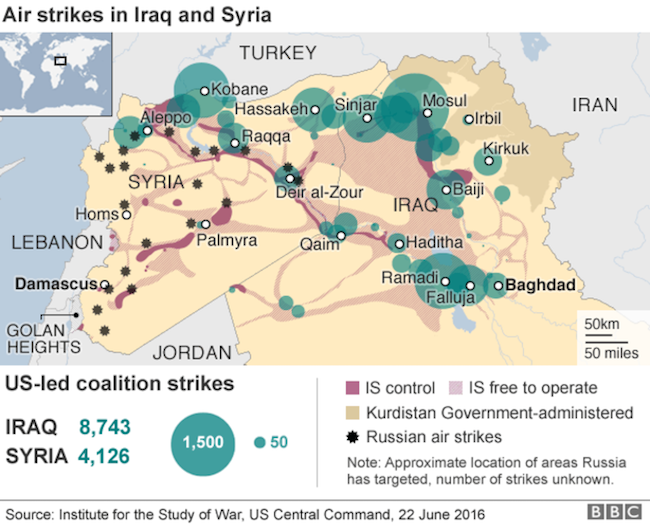 Above you can see where US and Russian air strikes are being placed. Given the knowledge that the US media has backed us with, one would think that this is primarily to defeat ISIS, right?
Above you can see where US and Russian air strikes are being placed. Given the knowledge that the US media has backed us with, one would think that this is primarily to defeat ISIS, right?
Well, in reality, it’s much more than that.
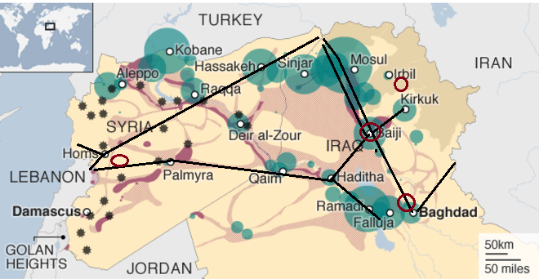
I’ve taken the above map and added the main Syrian pipelines with large black lines, as well as small red circles that show large oil refineries in the country.
It might just be me (I’m just being humble, it isn’t just me) but doesn’t it seem a little weird that the largest, most concentrated US and Russian airstrikes are placed right by large oil refineries and pipelines?
It isn’t just a coincidence, this is precisely why the US and Russia are in Syria. Notice how Russia’s airstrikes occupy the Western side of the country while the US airstrikes occupy the northern, eastern, and southern areas of Syria, as well as areas in Iraq.
There are huge areas occupied by ISIS that the US and Russia are paying no attention to, why? Because they aren’t close to the oil pipelines!
One of the main black lines on this map is the Kirkuk-Banias pipeline, which runs from Kirkuk in Northern Iraq, to the Syrian town of Banias, on the Mediterranean Sea between Turkey and Lebanon.
Ever since US forces inadvertently destroyed it in 2003, most of the pipeline has been shut down. While there have been plans in the works to make the Iraqi portion of the pipeline functional again, those plans have yet to come to fruition, and Syria has at least 2.5 billion barrels of oil in its fields, making it the next largest Middle Eastern oil producer after Iraq.
Oil companies are becoming dependent on the Kirkuk-Banias pipeline’s output and are eager to get the pipeline operational again. The tension over the Syrian oil situation is certainly being felt by wealthy investors in the markets, who are thus dictating US foreign policy.
Interesting how big time oil investors are having a large say in US foreign affairs, right? It just goes to show how much of US foreign intervention is really done in the sake of improving the lives of others, rather than economical interests.
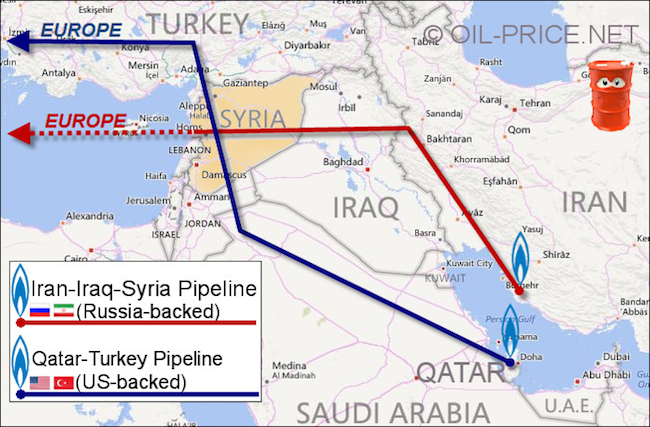
Moving on, Qatar needed to get its Qatar-Turkey pipeline through Syria, and Europe looked forward to linking up with the world’s largest gas producer because it was over-dependent on Russian supplies.
Vladimir Putin had previously cut off gas supplies to Europe in the dead of winter 2009 after a dispute with Ukraine over gas royalties. The Russian military has since invaded Ukraine and given Putin’s aggressive stance, Europe now urgently needs to find an alternate gas supply not controlled by Russia. This makes a middle-eastern pipeline coming through Syria a very attractive proposition.
The Assads soon realized that they were in a position of power. They decided to up the ante by creating an alternative source of fuel for a trans-Syrian pipeline. Thus, the Iran-Iraq-Syria pipeline was born.
If you look at this diagram and compare it to the previous one that shows where Russia and US bombs are placed, it is clear that Russia is trying to maintain control of already established pipelines in Syria, and the junction where these two new pipelines cross.
From an economic standpoint, this is a smart decision. Considering that Russia is the main contributor of oil to Europe, any competition can severely hurt their economy. However, from an ethical standpoint, it is completely unfair to the Syrian people.
Yes, Russia and the US are providing support to the anti-government army, but at what cost? You guessed it, the homes of countless Syrian people.
This brings me onto the next issue in Syria: the refugee crisis.
Syrian Refugee Crisis
Syria’s civil war is easily the worst humanitarian crisis we’ve seen in a very long time. Half of the country’s pre-war population (more than 11 million people) has been forced to flee their homes.
150,000+ of whom have been killed.
Families are struggling to survive inside Syria, or make a new home in neighboring countries. Others are risking their lives on the way to Europe, where several countries are tightening down on immigration regulations.
Bombings are destroying crowded cities and horrific human rights violations are widespread. Basic necessities like food and medical care are sparse.
The U.N. estimates that 6.6 million people are internally displaced. When you also consider refugees, well over half of the country’s pre-war population of 23 million is in need of urgent humanitarian assistance, whether they still remain in the country or have escaped across the borders.
Where are they fleeing to?
As you can see, many have chosen bordering countries as a temporary safety net, but the conditions are simply too poor for these people to stay there long term.
Thousands have migrated into Europe, where countries are struggling to find the resources to help them.
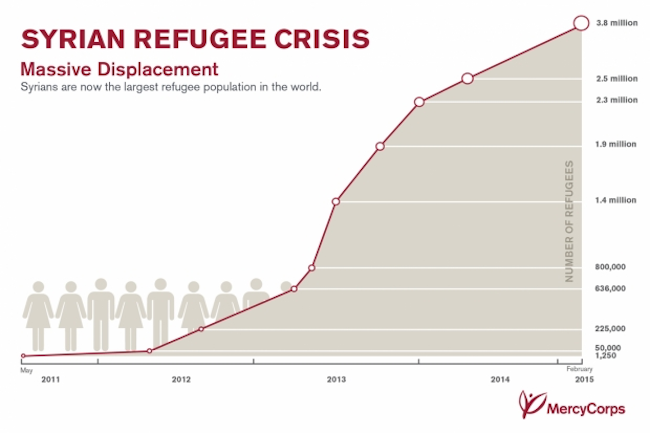
These refugees face terrible living conditions because they do not have secure homes. They live in tents, crowded with many other people, and eat only what is given to them.
This is unfair to the millions of people who have lost their way of life, and it’s all because of political and religious disagreements from people of power within Syria and Iraq, along with economic interests from Western nations.
It’s a sad realization that this is happening right now, yet we rarely hear it on TV, or even the internet for that matter. This is one of the biggest displacements of humans we’ve seen in recent years and it’s unfortunate that the Syrian conflict has dragged on for this long, because these people have nowhere to go.
It’s hard for developed nations to simply let in thousands of refugees because it threatens security, the economy, and job security. It’s easy to argue that we should bring as many of them to our country as possible, but from a legitimate standpoint, it is much harder to do.
My take on all of this
It’s a lot of information to take in, and even experts on this issue get confused as to what the interests are of everyone involved. But after this analysis, I can take away a few things:
- This issue won’t be solved unless the powers in Syria and Iraq can come to a conclusion as to how they will be governed. This is easier said than done, because they have been fighting over religion for thousands of years. Thus, US-Russia intervention is only a short term solution. Extremist groups won’t be going anywhere if they are dissatisfied with the leadership in the country.
- The United States’ main interest in Syria is the Kirkuk-Banias pipeline. It is worth billions of dollars and is currently not functioning. If they can effectively overthrow ISIS and take control of this pipeline, it will be a very lucrative proposition for US oil companies.
- Russia is in Syria to control the Western pipeline junctions, primarily the Iran-Iraq-Syria pipeline, which could pose a large economic risk for Russia if it becomes a main exporter of oil into Europe.
- Alongside all of these geopolitical issues, it seems that the media is underrepresenting Syrian refugees, as they rarely make it into the news. Millions of innocent civilians have been displaced, and a solution to this problem doesn’t seem to be on the horizon. If the US and Russia were really there to make a positive impact, they would be helping these refugees instead of bombing their homes.
This analysis has taught me more about how war really works. To people who know a lot about war, it won’t come to a surprise that it is all about money. I’m completely aware of this, but before this analysis, I wasn’t aware of the massive pipeline issues happening right now because the media doesn’t tell you about it.
I’ve also realized that the mainstream media not only in North America, but globally, doesn’t tell you the whole story. There is so much more to this conflict than America fighting ISIS and ISIS fighting back against a corrupt government. There are layers upon layers to this that have religious, political, and economic consequences. There are many nations involved, and billions of dollars on the line in the form of oil money. And the civilians receive the bad end of this deal.
If you dig deeper, you can find the true motives of everyone involved.
I’ve found some of the motives, but lord knows, there is much more to this issue than is even presented on the internet.
But from my humble perspective, it’s just sad that the two most powerful nations in the world aren’t fighting to protect the innocent civilians of Syria and bring peace back to the country, but rather fighting to control oil pipelines and profit billions of dollars in order to “protect American interests”.
It’s like me witnessing a bully take a little kids money and me going up to him and reclaiming the kids money but instead of giving the kid his money back, I step over him and go buy myself some ice cream.
It just goes to show how blinded we are by money and power, especially amongst the people that claim the top position on the human hierarchy.
Something needs to change, and it isn’t going to come with the people who are in charge, it must come with a massive shift in ideological thinking. A shift in thinking that sees us value the betterment of our fellow people rather than the claiming of material desires, like me giving that little kid his money back.
Sources:
http://www.bbc.com/news/world-middle-east-14703995
http://www.bbc.com/news/world-middle-east-27838034
http://theantimedia.org/how-the-war-in-syria-is-about-oil-not-isis/

